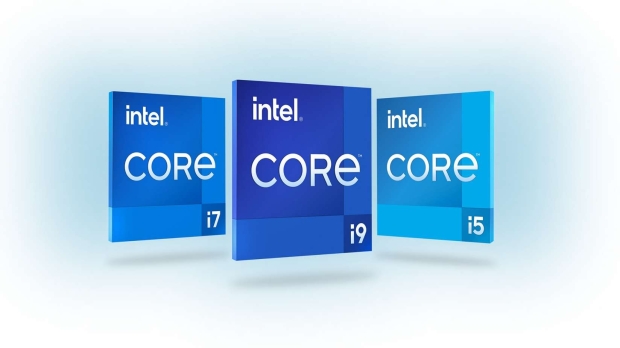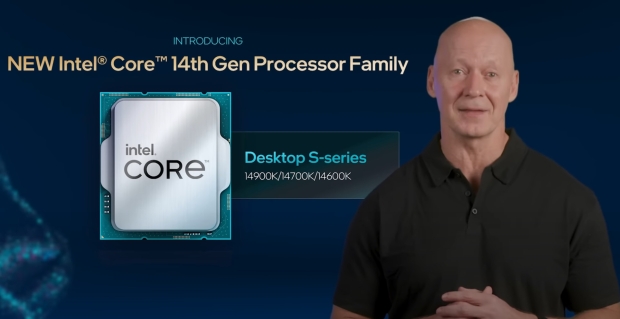When Intel formally announced and launched the new Intel Core 14th Gen processors, with the flagship Intel Core i9 14900K leading the pack, one the significant features of the new 'Raptor Lake Refresh' lineup was a sizable boost to performance in games - with Intel citing "up to 23% gaming performance uplift compared to leading competitor processors."

The new Intel Core 14th Gen processors, image credit: Intel.
How it manages this isn't simply due to the impressive out-of-the-box boost clock frequency of 6 GHz for the 14900K; some of it comes from the new Intel Application Optimization (APO) tech exclusive to the 14900K and 14700K. With Intel's hybrid architecture of P-cores (Performance or 'big') and E-cores (Efficient or 'small') maturing, this performance uplift technology works alongside the existing Intel Thread Director application thread scheduling.
At IEM Sydney 2023, we had the opportunity to sit down with Roger Chandler, Intel vice president and general manager, Enthusiast PC and Workstation, Client Computing Group, to talk about the new APO tech, why it works for some games, and how the performance uplift works.
- Read more: Intel Core i5-14600K "Raptor Lake Refresh" CPU Review
- Read more: Intel Core i7-14700K "Raptor Lake Refresh" CPU Review
- Read more: Intel Core i9-14900K "Raptor Lake Refresh" CPU Review
"When introducing the hybrid architecture, we realized there would be big and small cores," Roger Chandler explains. "The small cores are great for multitasking, background tasks, and highly parallelized workloads. And the big cores are great for high-demand, high-performance individual threads like a gaming thread."
"Around two years before introducing it, we realized this would introduce some interesting dynamics within how highly parallelized applications work because not every thread is equal," Roger continues. "So we developed Thread Director, working with Microsoft, within the OS to ensure everything's deeply integrated for how threads are assigned to specific cores. This first iteration was good at matching high-performance cores and high-demand threads."
Introduced with Alder Lake, Intel has continued to evolve Thread Director over time but is now at the point where it's taking the time to look at the complex world of PC gaming - and how games use the CPU to fine-tune this process on a per-game basis.

1080p game performance on the new Intel Core i9 14900K, image credit: Intel.
"We now understand that some threads are in high demand at one point but not so high demand at another. You don't want to tax the CPU with that because it could impact power and so forth," Roger says. "So, the next iteration is this. What APO does is we test the games and see, okay, this might benefit from a fine-tuning of the policy just because of the unique way this game behaves."
If there's a game that can benefit from Intel Application Optimization (APO), the policy is changed within the Thread Director. The game is simply added to the list, and PC gamers rocking the new Intel Core i9 14900K or 14700K get a sizable performance uplift - sometimes in the region of 20+% in specific workloads or scenarios compared to the top-end Ryzen CPU.
"The user does not have to do anything; there's nothing we have to do with the driver," Roger adds. "It's all just a policy thing we manage based on how the system interacts with the application. Not every application benefits from this; we test it and find what works flawlessly with Thread Director, and there are no issues."
Users can also turn the feature off via a Microsoft Store application, and when it comes to game updates, Intel works closely with developers to re-test as time goes on to ensure there aren't any issues. "We'll try to make it as seamless for the end-user as possible," Roger explains. Currently, the Intel team working on Intel Application Optimization (APO) is focused on games. Still, it could expand to other workloads, such as those in the creative space.
"Thread Director and our dynamic tuning technology policies are pretty elegant," Roger says. "They cover 99% of most use cases, but games differ. They have spiky behavior for things that happen, so that's how APO works. If we find the opportunity, we apply it. If the game doesn't need it, great. We don't put it on the list."



